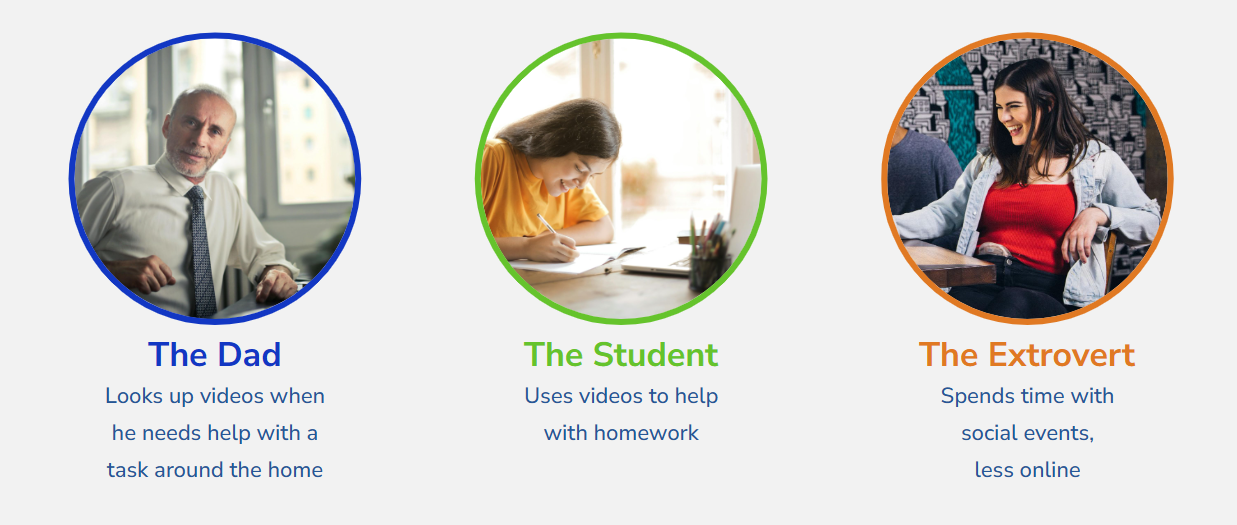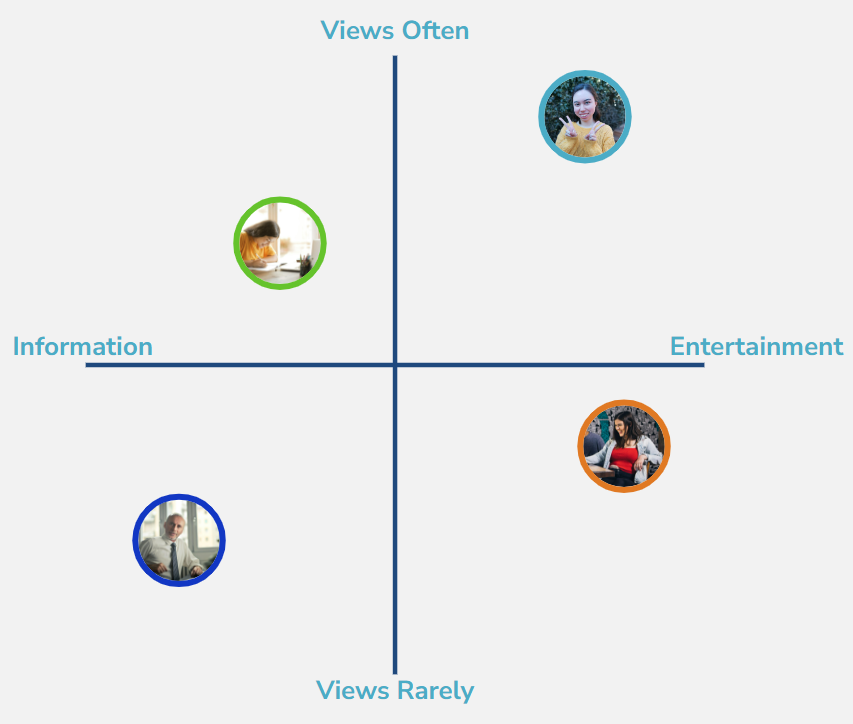Personas: Understanding Real People with Imaginary Users
The Design Thinking Process is a method centered on users and understanding their needs. As a result, the first step of Empathy is crucial for setting the stage. A great way to understand a product’s audience is by creating Personas.
What are Personas?
Personas are characters that represent different types of users. They are not real individuals, but rather models of traits and behaviors that are common among similar users. Combining these shared characteristics in a persona allows designers to see a general kind of customer they may have and consider how to appeal to them.
Validated vs Hypothetical
There are two main variations of a Persona: Validated and Hypothetical. They vary by the information used to create them.
Validated
Validated personas are based on actual user data gathered in prior empathy research methods.
Hypothetical
Hypothetical personas are based on the creator’s experiences with and assumptions about various types of people. Because of this, these personas are probably less accurate than validated ones, but they provide a good test subject for user research. The users can confirm some aspects while disproving others.
What Makes a Persona?
To practice making personas, I focused on users of YouTube, a website I discussed in my Ui/UX analysis. I created a validated persona based on me as a viewer and a hypothetical persona based on a YouTube creator.
Name/Role
The first thing you learn when you meet a person or a persona is their name. A simple name makes it easy to discuss the persona in design meetings. The role is what kind of user they represent.
My first persona was myself, so it’s named Victoria. Her role is The Consumer, representing a person who watches a lot of videos. My second persona’s role is a creator who makes video essays. Because she is an essayist, I named her Ella for memorable alliteration.
Demographics
Demographics are any other attributes relevant to the product. This could be a user’s age, job, income, etc.
For my personas, I included age as that is a major factor influencing who watches and creates YouTube videos.
Goals
Goals are what motivate a user to engage with the product. It is what they want to achieve.
My persona’s goals are related to wanting to be entertained by videos or learn something new. As a creator, Ella’s are more focused on getting engagement and positive feedback for her videos.
Journey
The journey includes the steps taken to reach the goals.
For me, the journey is mostly browsing to find interesting videos I want to watch. Ella’s journey is more difficult, as she has to plan then create and edit her video before it can go out into the world.
Motivation vs. Ability
The biggest factors influencing how a user behaves are motivation and ability. If the ability to complete a task is easy, the user is more likely to do it and won’t need to be persuaded as much. If the task is more complex, the company has to build up the user’s motivation to get them willing to go through it for the final product.
Motivation vs Ability chart; the harder something is to do, the more motivated the user must be made
Factors
Also with motivation comes various factors. There are Motivating Factors, Inhibiting Factors, and Possible Triggers for the action.
My Motivating Factors are what would make me desire watching videos, such as wanting to see new content or not wanting to do other tasks. Ella’s Motivating Factors for creating videos include wanting to gain subscribers, share ideas, and of course, make money.
Inhibiting Factors that would discourage me from viewing videos is if I have other things to do or I can’t find something I want to watch in the moment. Ella’s Inhibiting Factors may be a lack of ideas or a lack of time because of other priorities.
Finally, Possible Triggers are events that may cause the user to act. For my persona, triggers may be eating and wanting something to watch, a subscribed channel uploading, or me remembering an old video. Triggers for Ella may be a topic that is trending online or a potential collaboration with another YouTuber.
Influencers
A person or persona is not in a bubble. They are influenced by others around them to do certain things.
For my persona, people like my friends and sister share videos with me and I do the same in return. For Ella, the way she makes her content is influenced by other YouTubers she sees and especially her audience whose support she depends on.
Environments
Depending on the product or service, it may be used in various times and places in practice.
I view YouTube videos mostly on my laptop, but I also look at them on my phone. Ella uses her computer to create and manage her videos, but she may also use her phone to check on things while out in the world.
Persona Family
For each persona, there are other related personas that connect to it in some way. These can be portrayed on a persona matrix, a single grid showing how the users compare between two variables.
My persona is a viewer, so related personas may be those who view videos for different reasons or more or less often. An older person such as a dad may watch videos only occasionally to figure out how to do a task. A student may use videos more for education and learning. A extroverted and social person may spend less time online, but use it for entertainment when she does.
Different types of viewers use the product differently
Ella is the persona of a YouTube creator, specifically one who does video essays. There are many varieties of YouTubers that fill different niches and interests. Their genre and style affects how long their videos are and how often they post.
Though they are all YouTubers, they can vary a lot
Value of Personas
By creating fictional people based on quantitative or experienced data, designers can keep their variety of users in mind every step of the way. Remembering who will be using the product is crucial for making design decisions that fulfill a range of needs and provide value no matter what kind of user is consuming it.
Presentation
All this persona information can be found in a cohesive slideshow; click the button below to view the final pdf!





